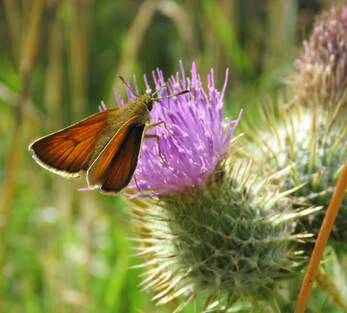 Small skipper on thistle
Small skipper on thistle For everything a season. Today, it’s small skipper. A rush of small skipper. The first time I came upon a brood was five years ago on knapweed at Simpson Ground, south-east of Windermere.
Small skipper settle with fore-wings angled above hind-wings. As the small butterflies forage amongst thistle flowers they balance and tilt, presenting striking poses. An infinite variety of postures not shown in traditional field- guides. Look at the seeming folds in the wing, and how textures change from scales to hair. The brood is intent on nectaring and mating, so today there’s ample time to contemplate their behaviour and to photograph them, to compose a shot. Focusing on what the camera sees, I glance up to consider the wider action. Mating is quick , unlike the lingering six-spot burnet and common blue. Today, I scan my images to find a butterfly with four antennae and twelve legs. I saw it, the camera did not.
In presenting small skipper images I want to show anatomical detail of the butterfly. And the unusual disposition of their bodies as they interact with thistle flowers. So I crop close. Sometimes too close and the butterfly is no longer delicate and ethereal, but a monster insect, forbidding.
I draw back, to show the wider picture, the pasture of long seeding grasses, vital to feed its caterpillars. This is the day of small skipper but the thistles attract other butterflies: dark green fritillary, small blue, meadow brown.
A fortnight with small skipper. And perhaps it's over. On Sunday morning there's no sign of them and there's heavy rain all night long.
Reading- up on butterfly anatomy, I discover that the skipper genus is unique in having greater resolution and sensitivity of vision because of the disposition of rods and cones in its compound eyes. So micro-navigation about those thistles and grasses is precise.
A painted lady summer, a once in a decade phenomenon, is heading our way.
18 July 2018 Butterfly hot spot with small skipper
4 August 2014 Simpson ground small skipper with flora

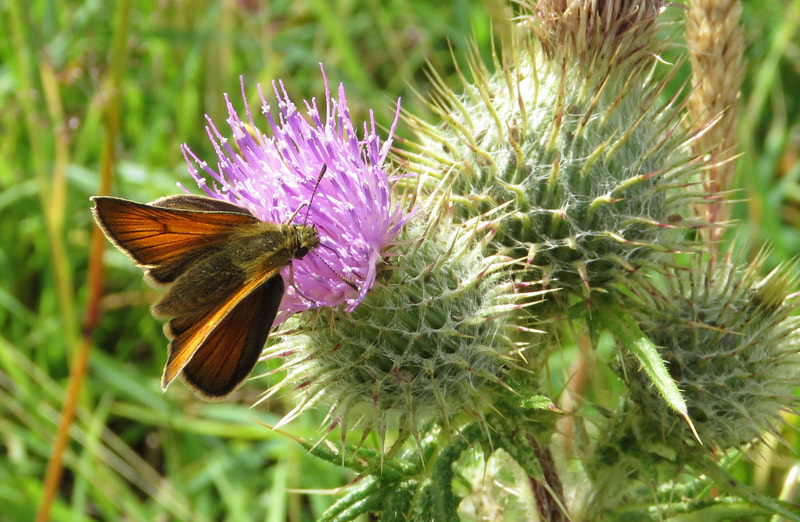
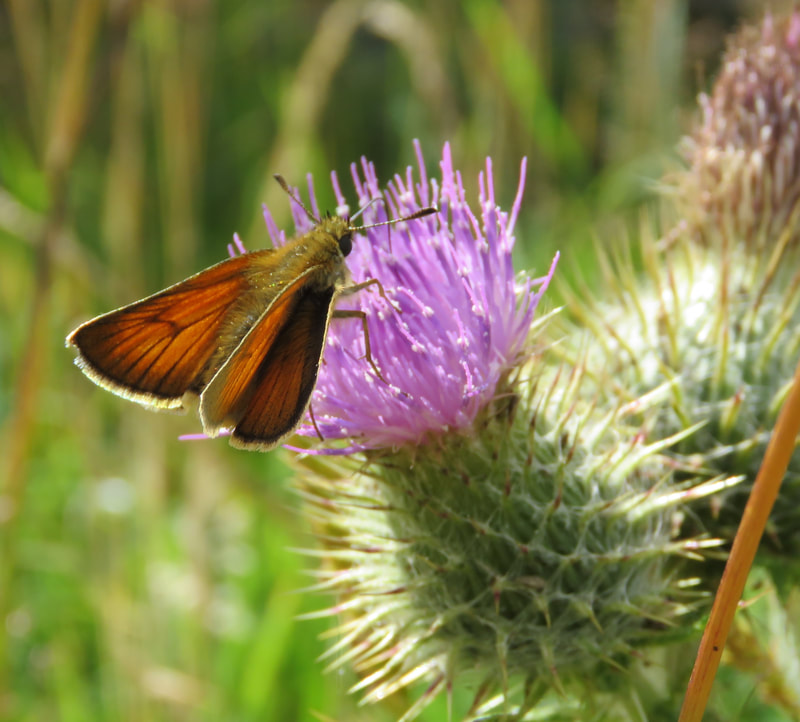
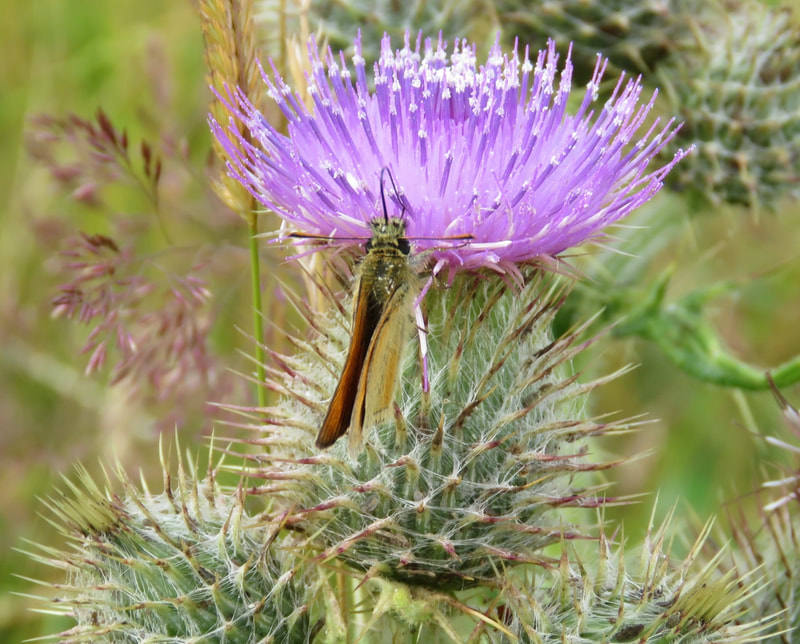
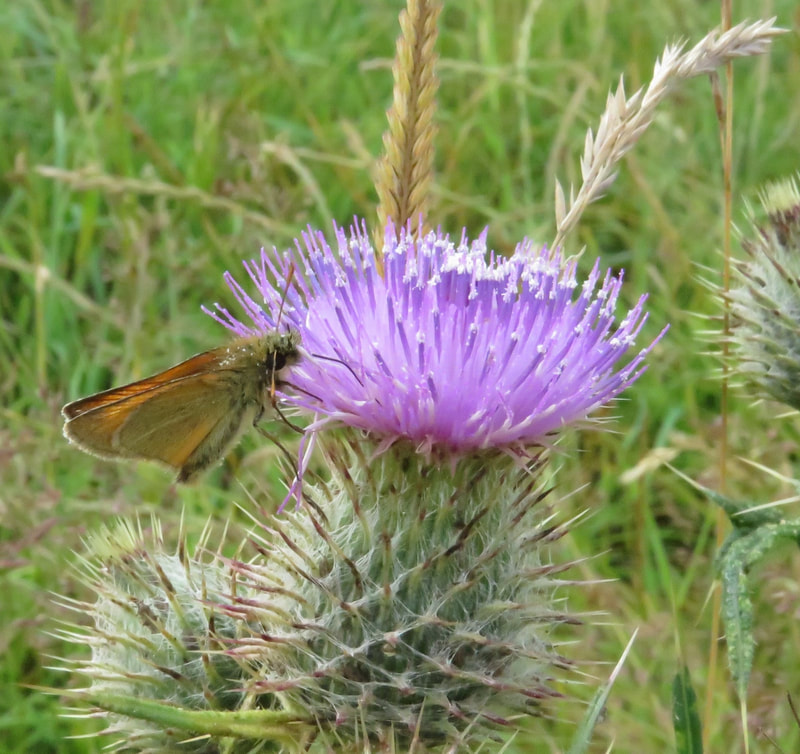
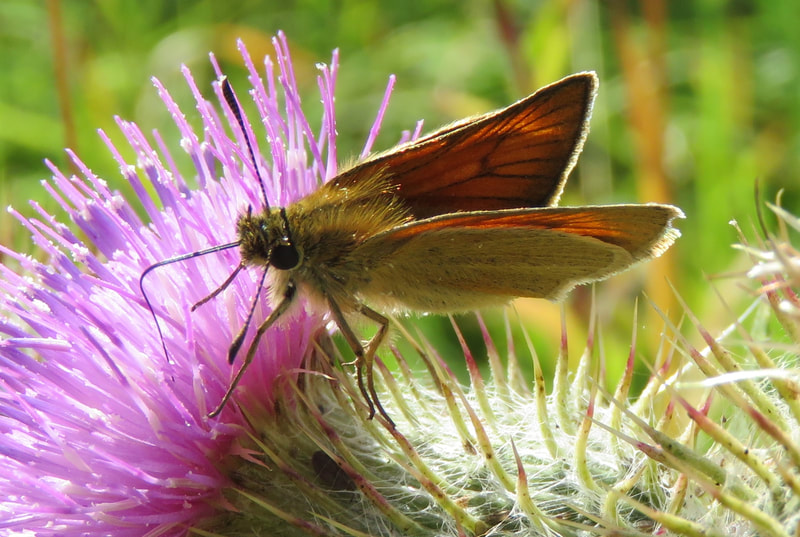
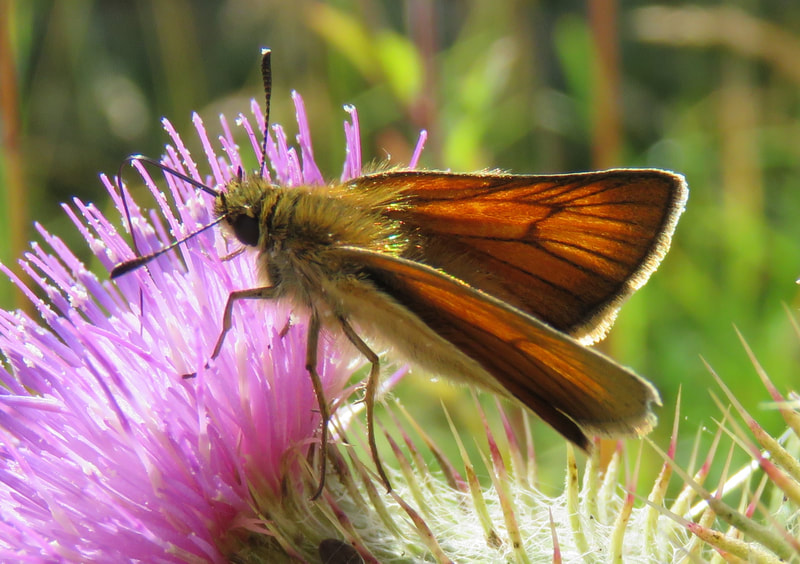
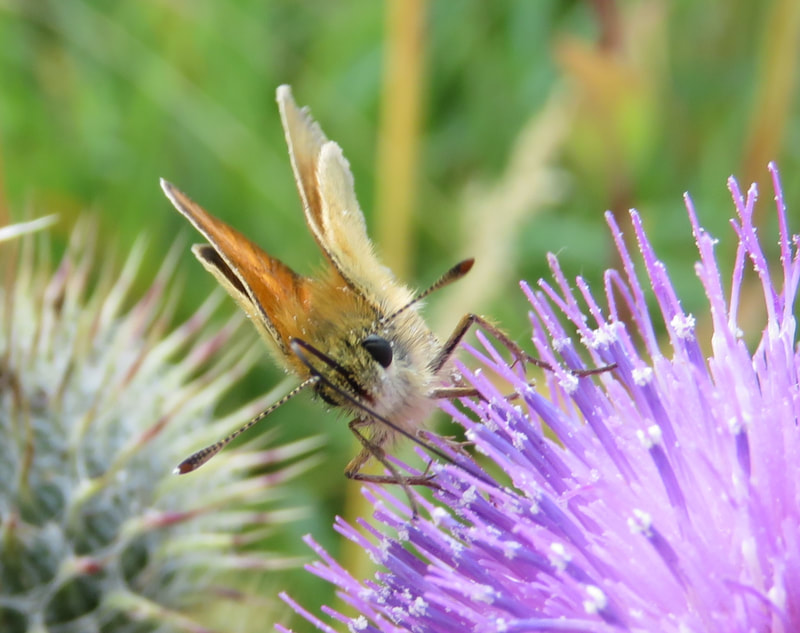
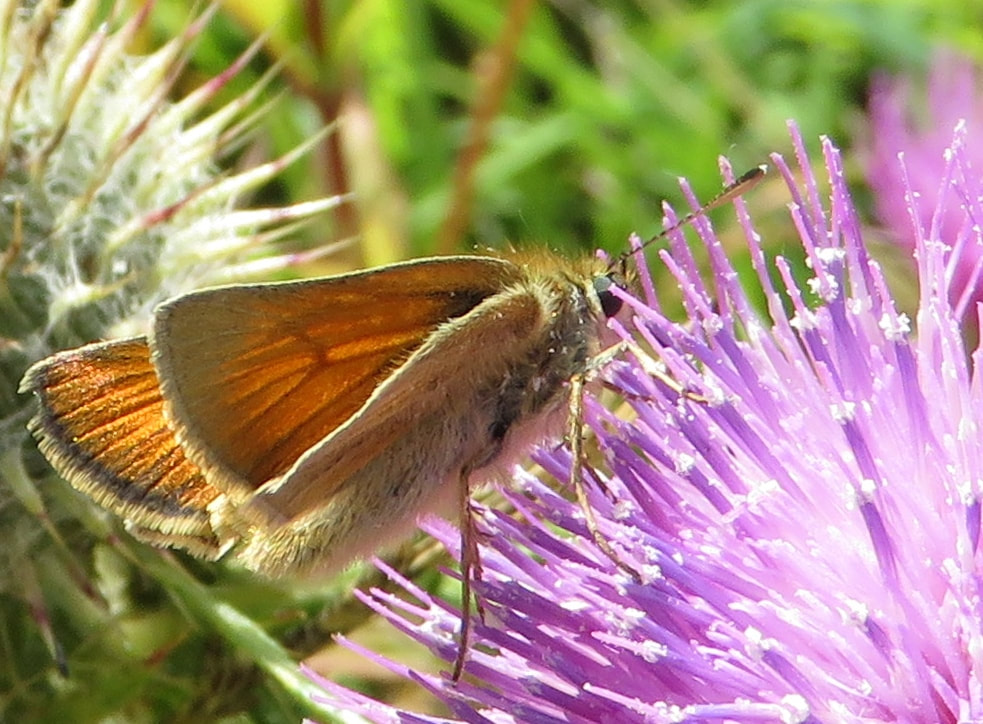
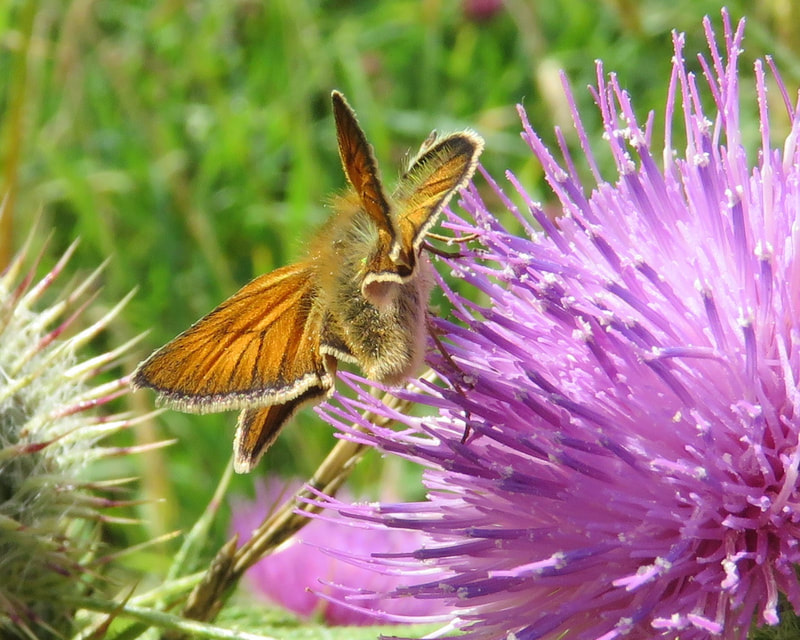
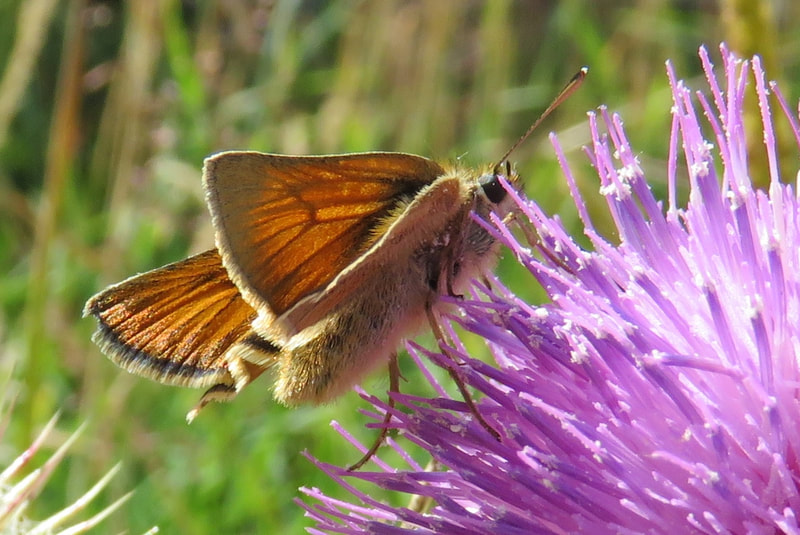
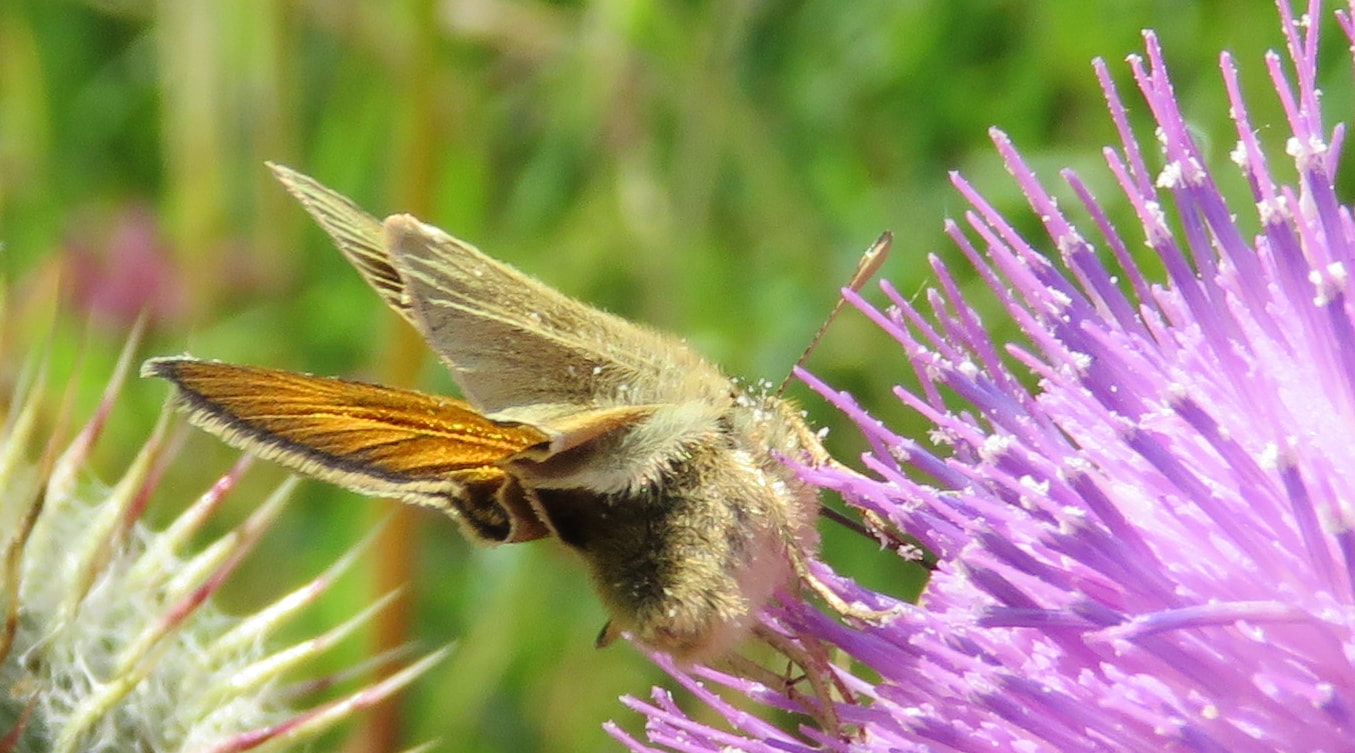
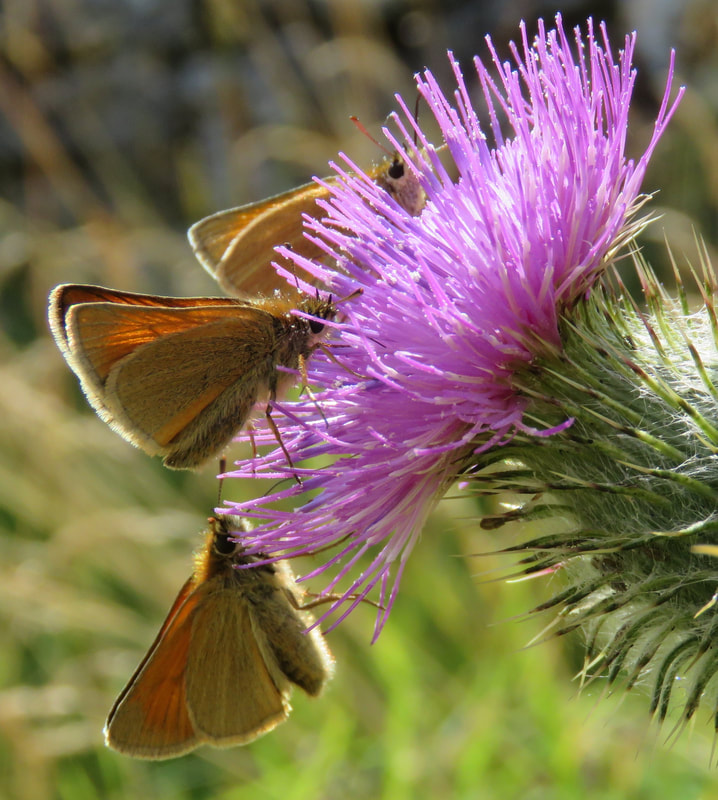
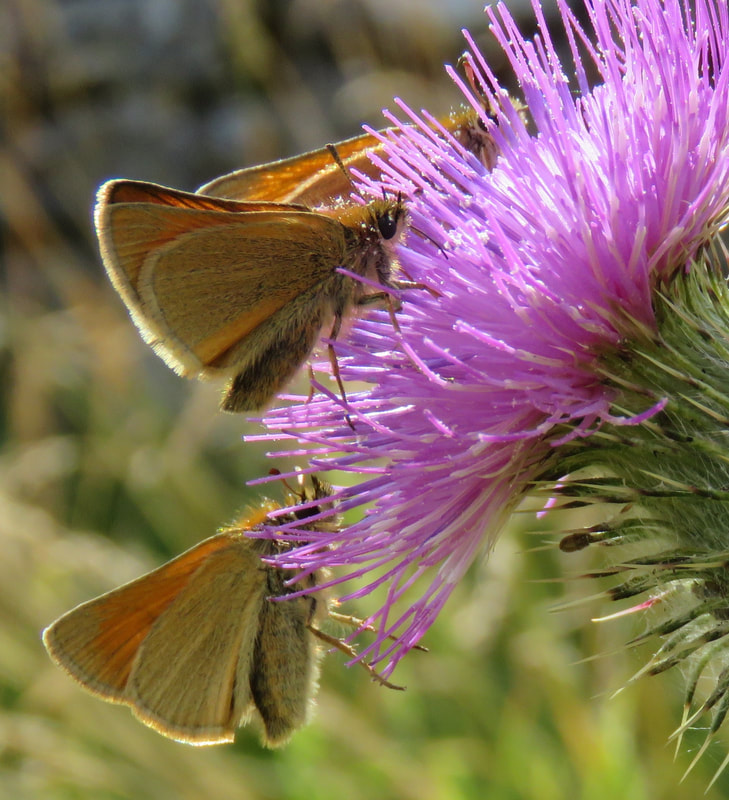
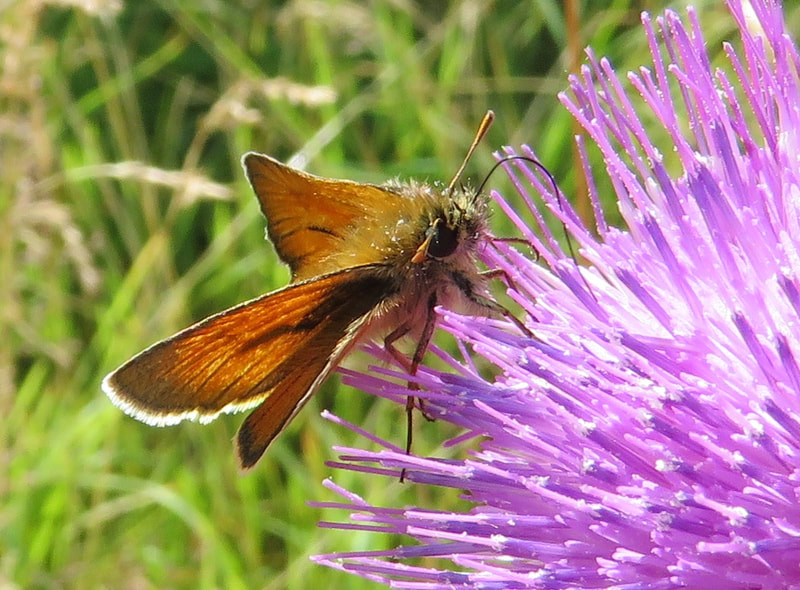
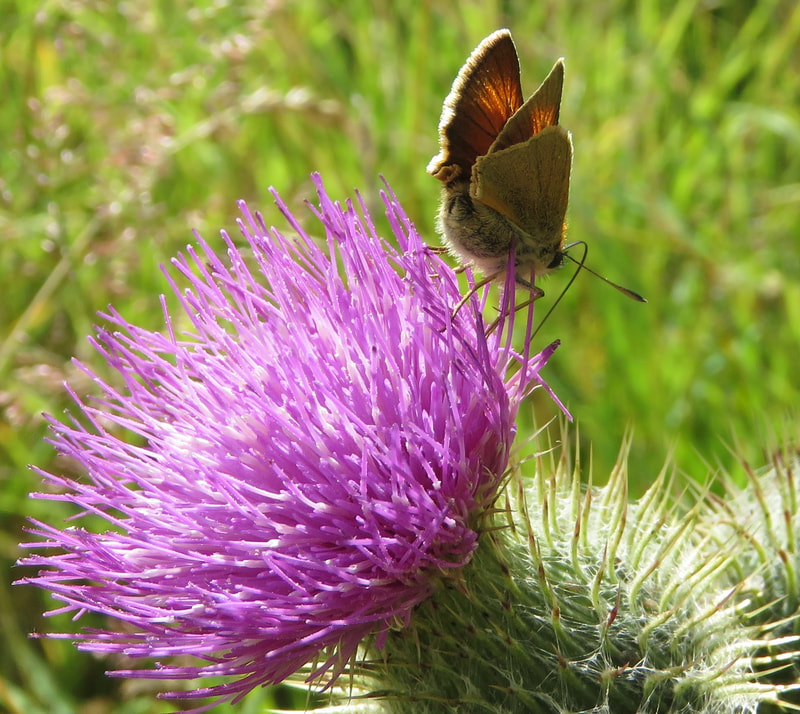
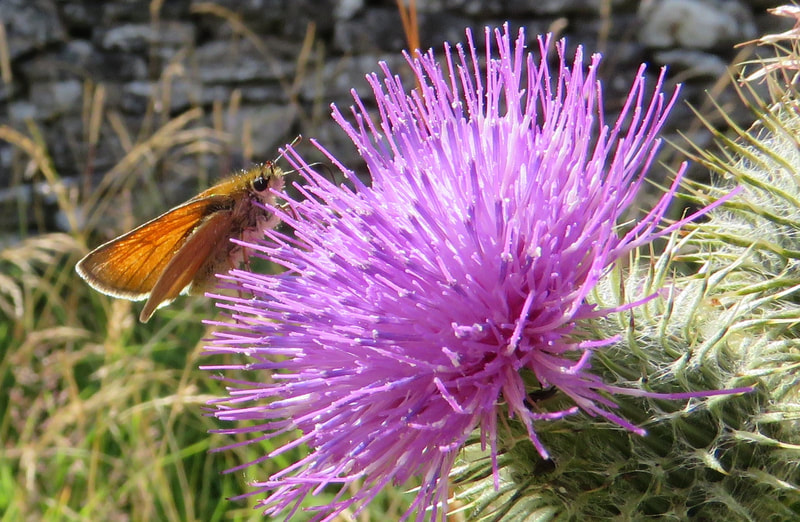
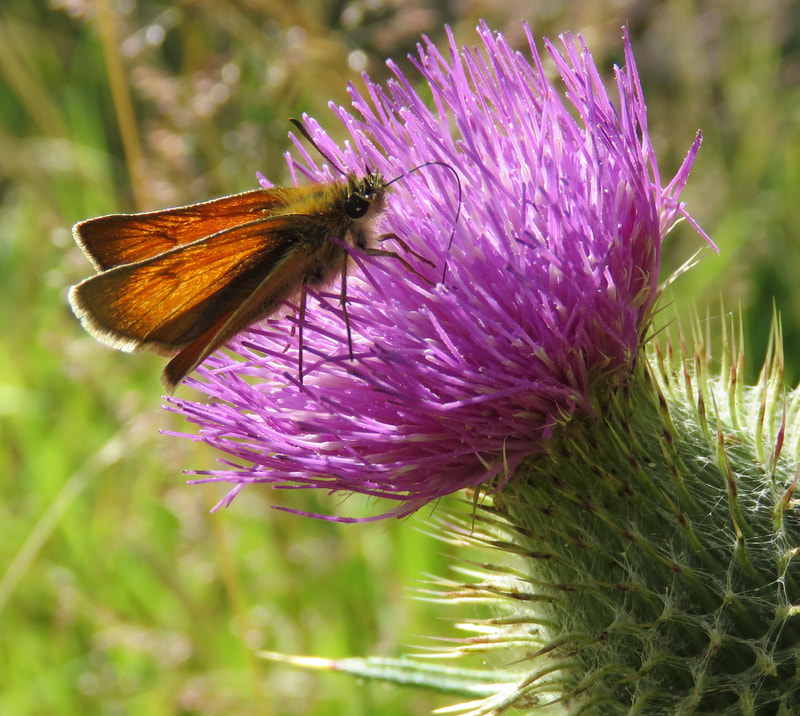
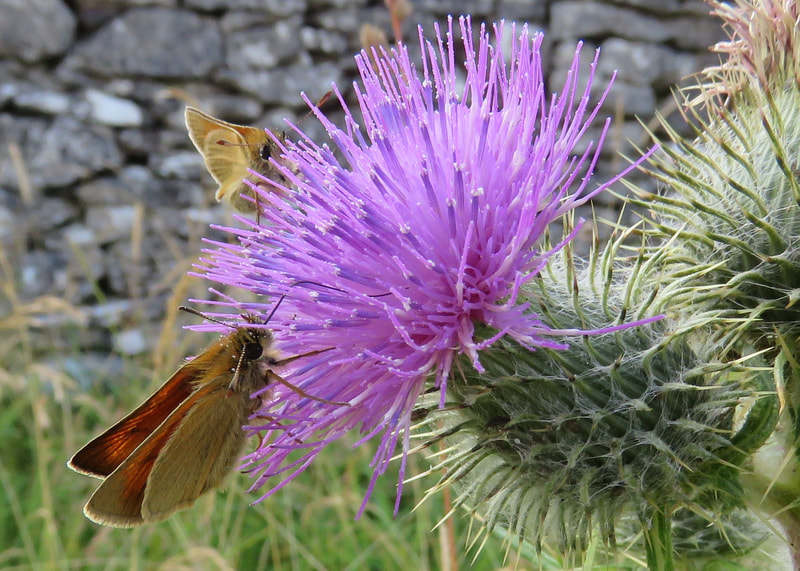
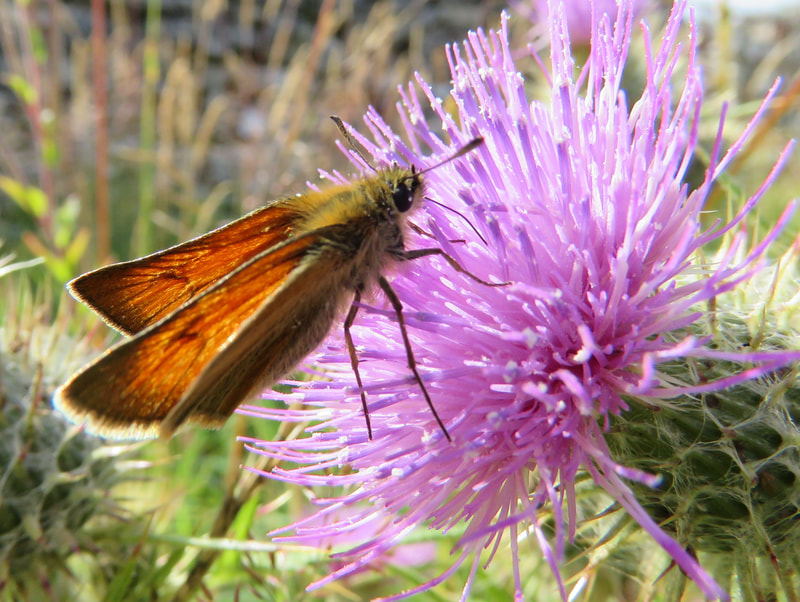
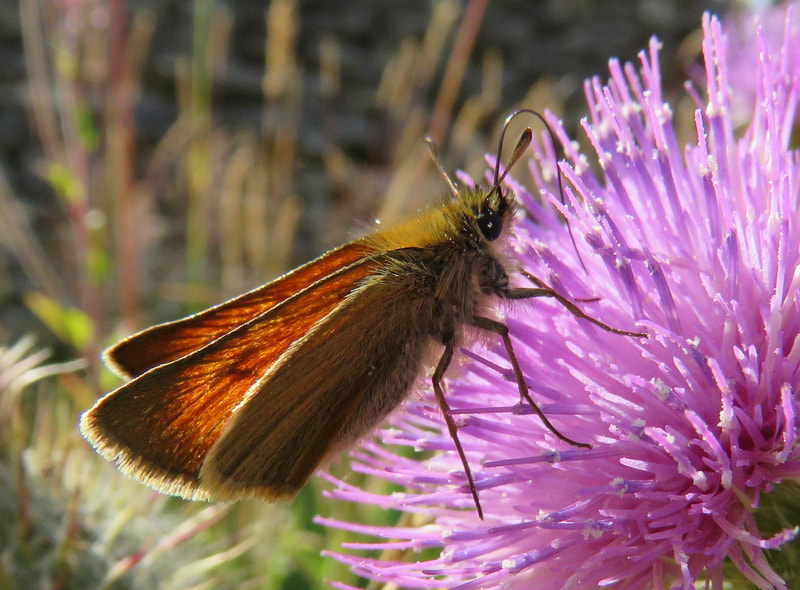
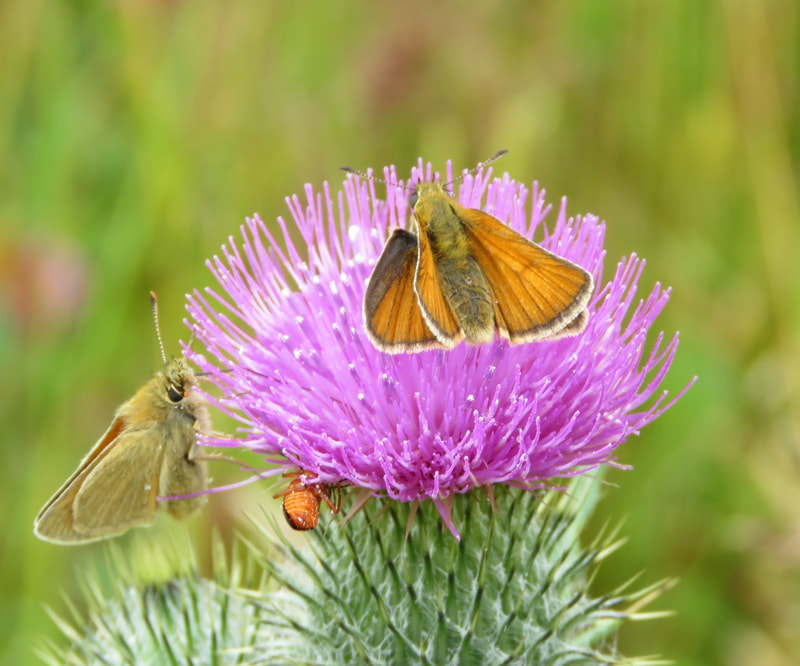
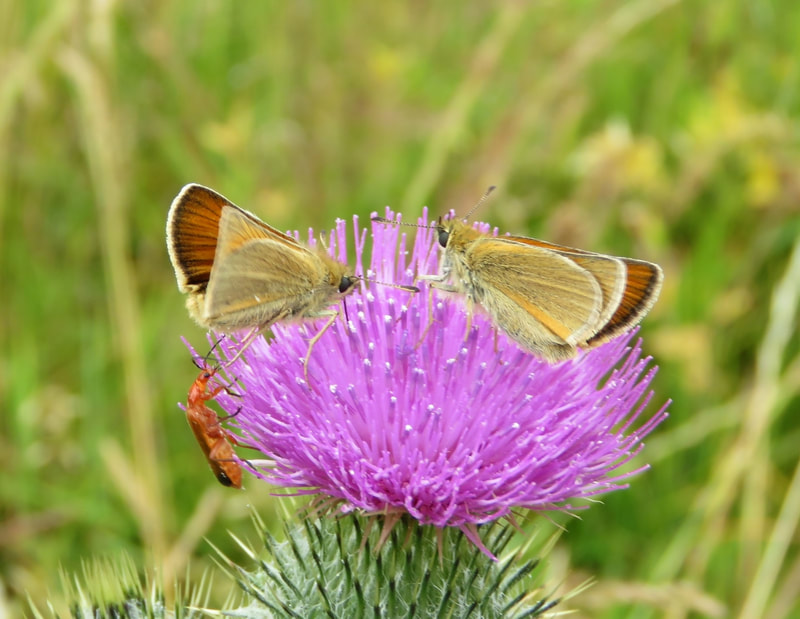
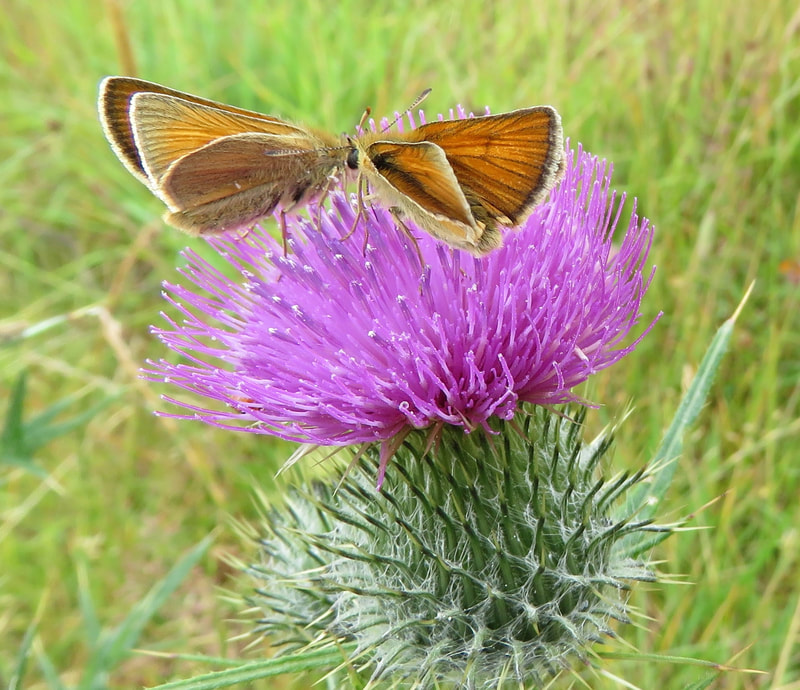
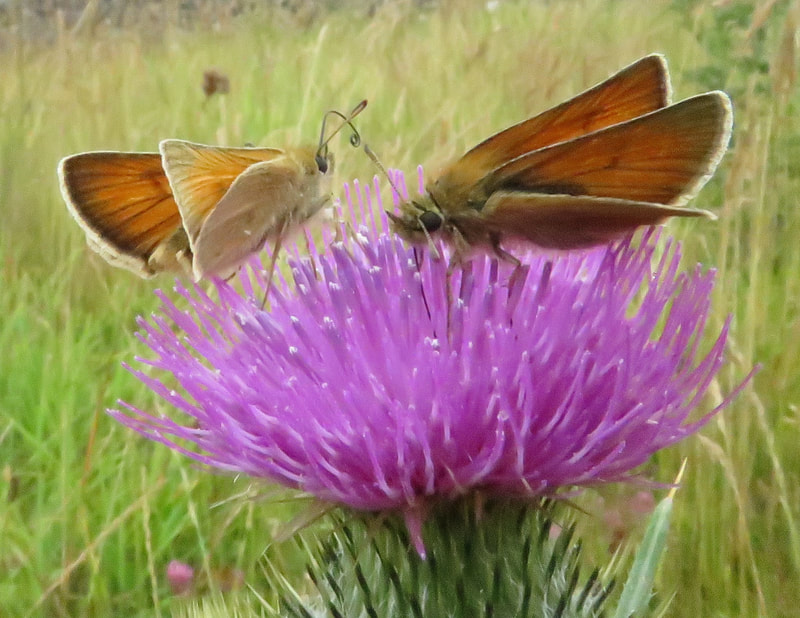
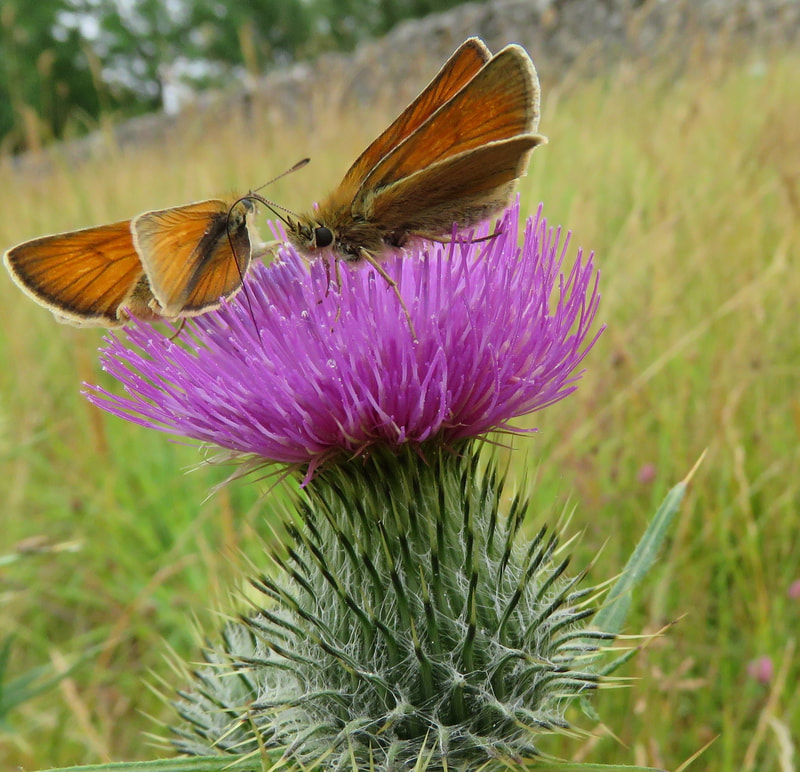
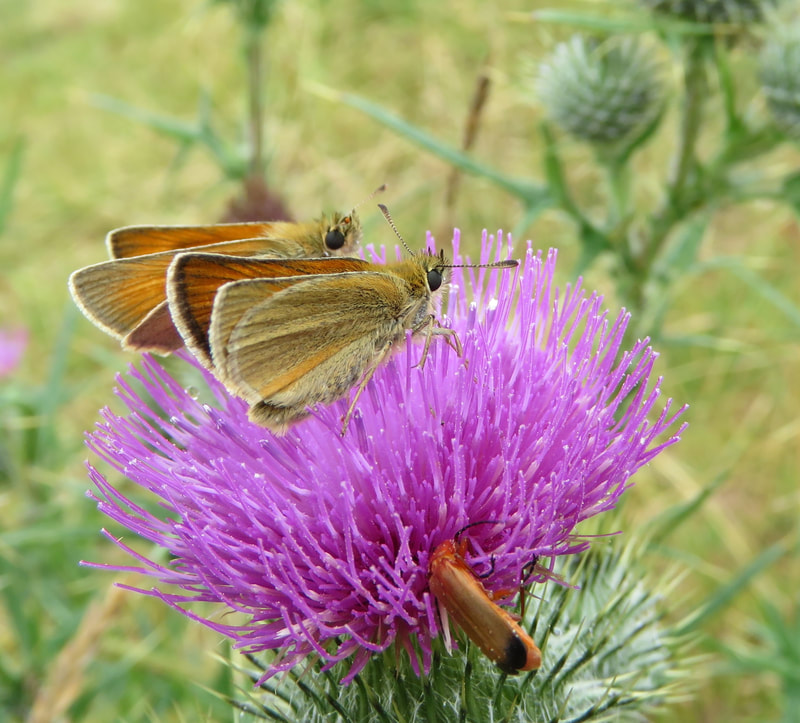
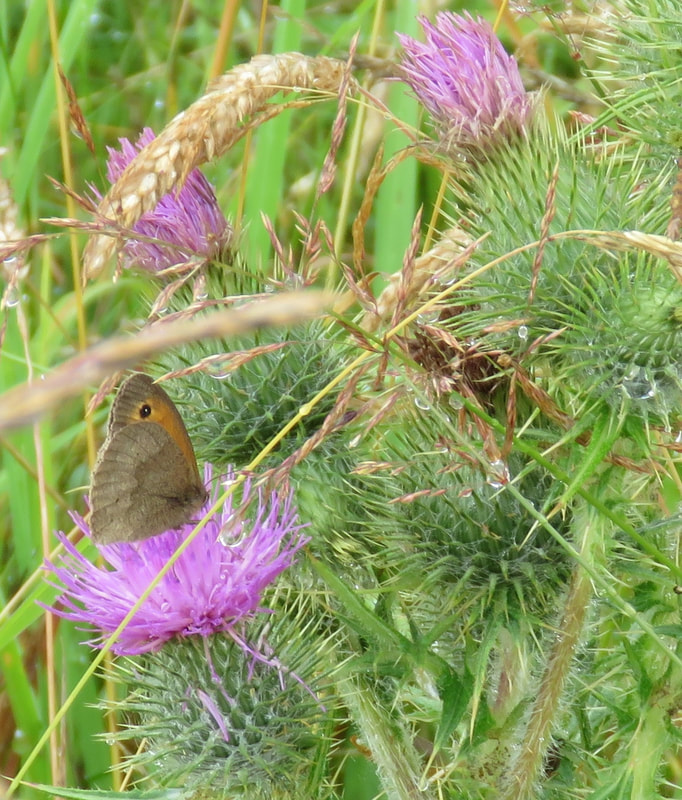
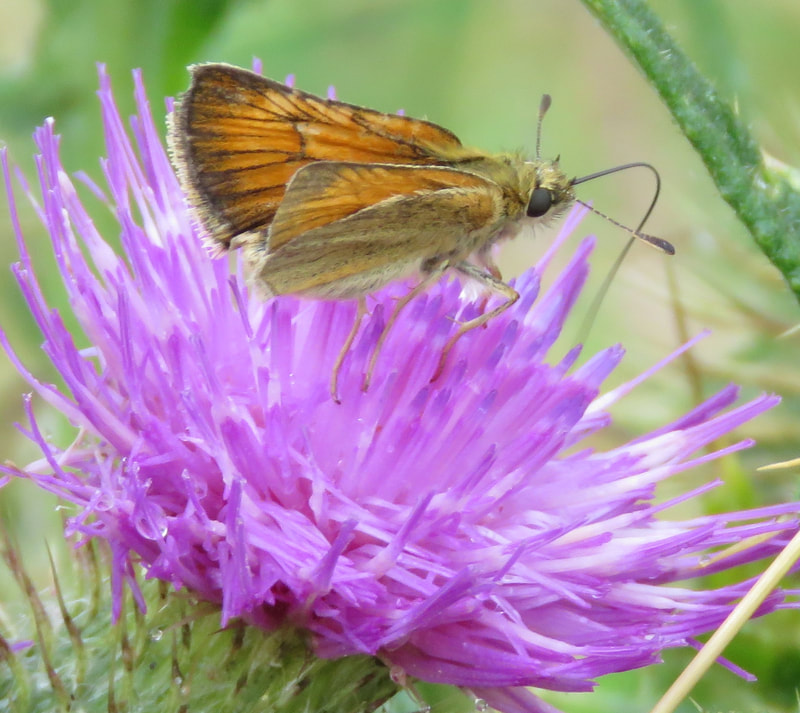
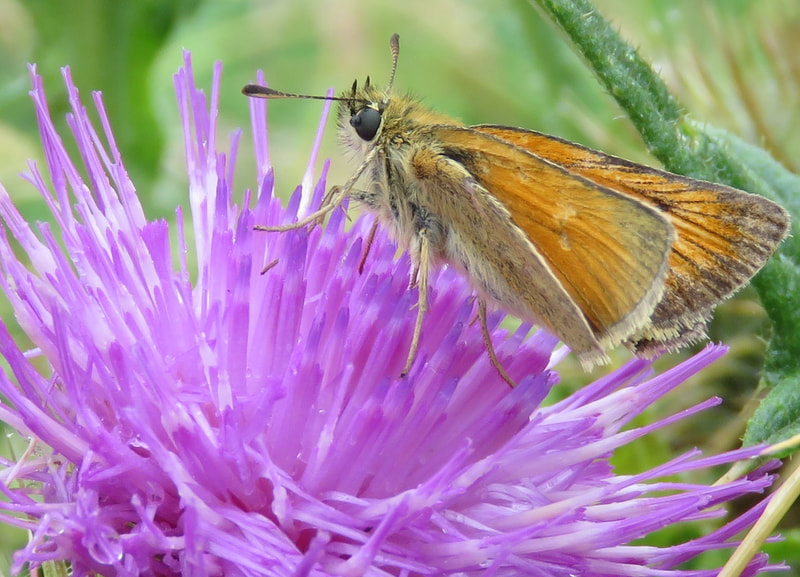
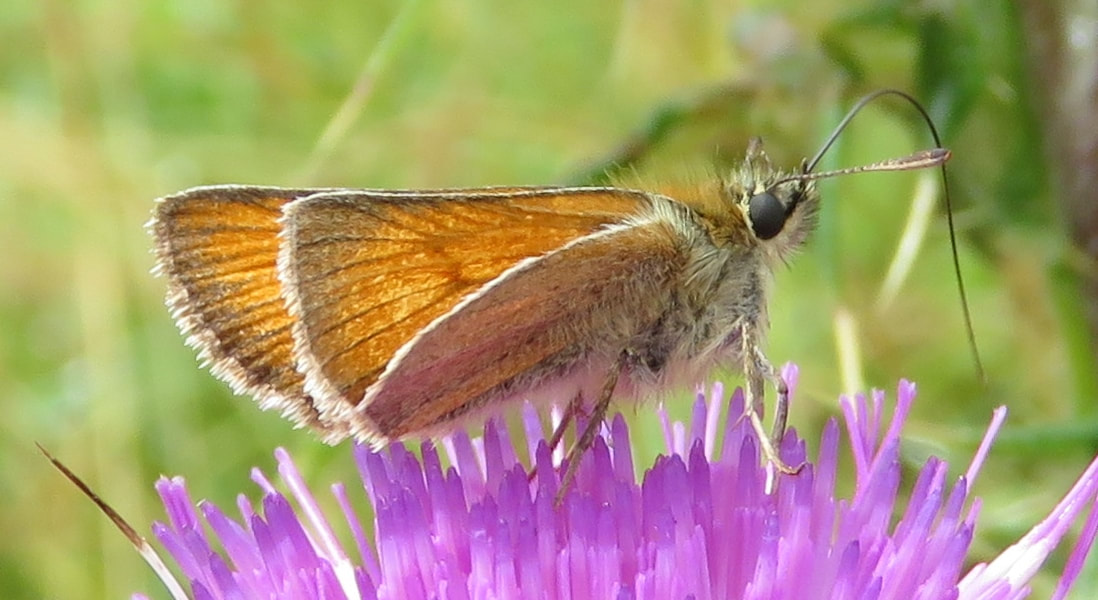
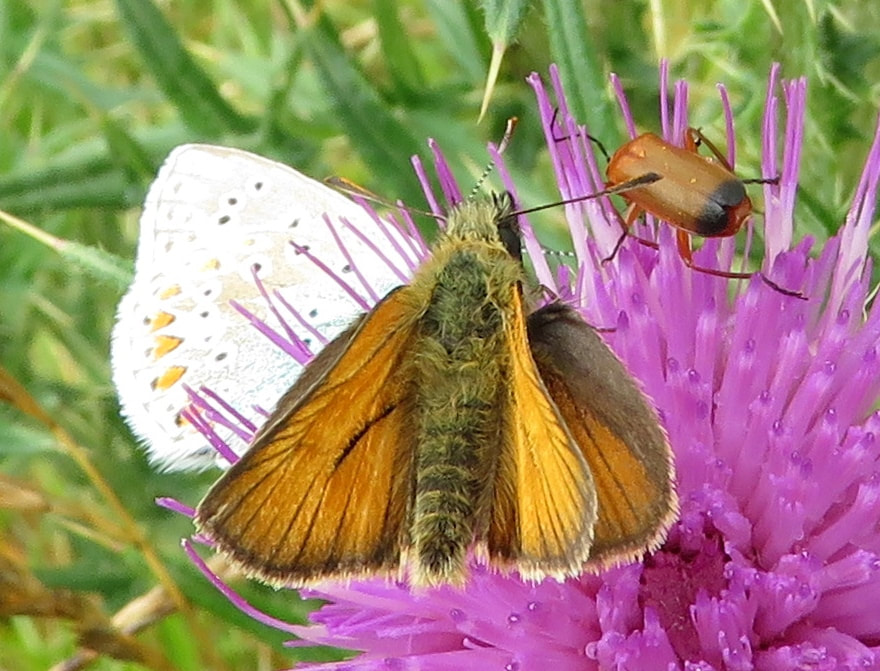
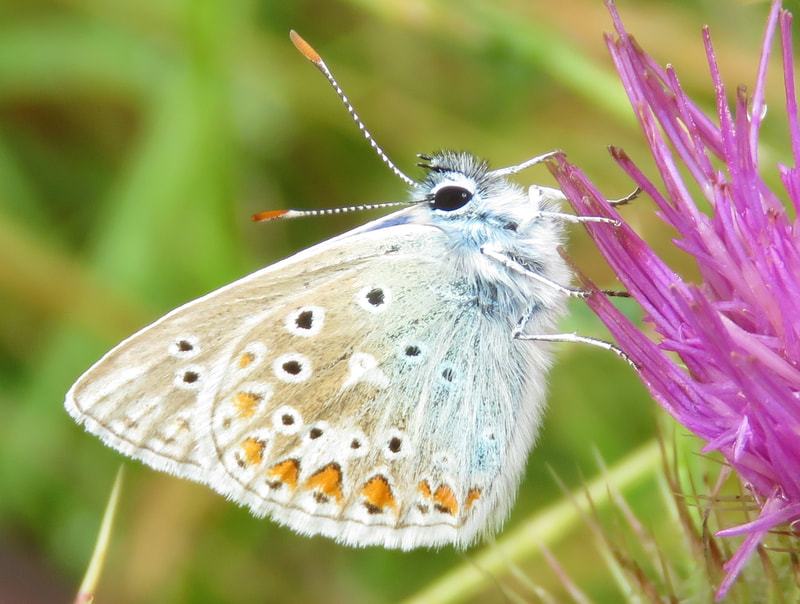
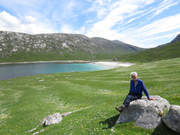
 RSS Feed
RSS Feed